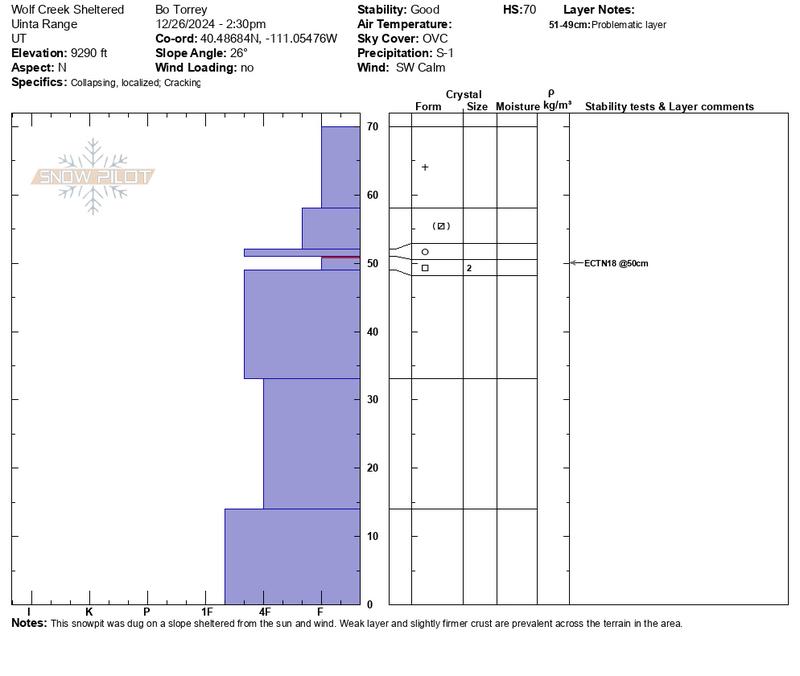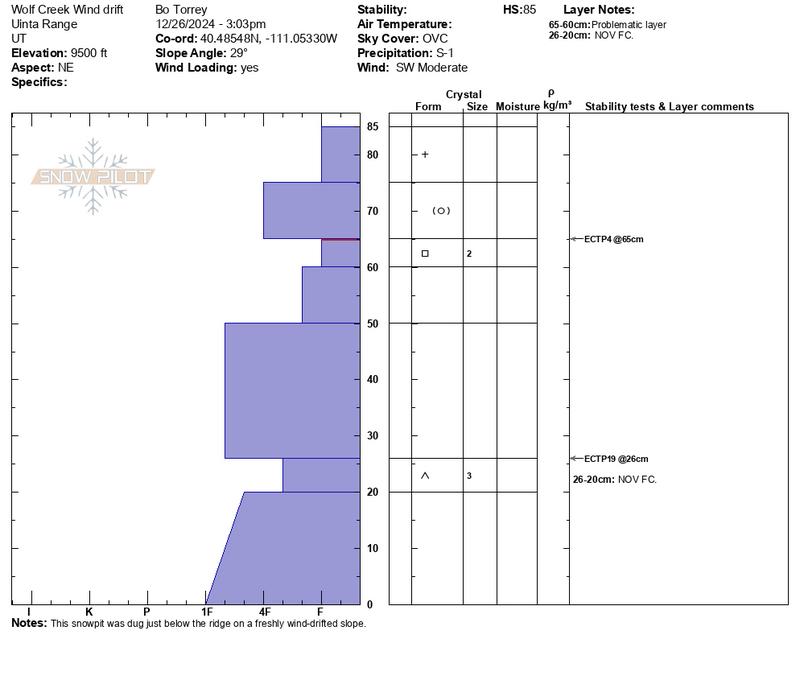A soft, fragile crust was consistently observed directly above the December facet layer in the area. While this crust was weak, it was more cohesive compared to the underlying faceted weak layer. Sheltered slopes showed 2-3 inches of new snow atop a mid-pack almost entirely composed of faceted grains with minimal strength or structure.
In contrast, slopes near ridgelines, where wind drifting commonly occurs, had a more robust and layered snowpack. Both the December and November facet layers were clearly identifiable and reactive in extended column tests, propagating fractures. These findings suggest a potential for step-down avalanches, particularly on mid and upper-elevation slopes where old dense wind-drifted slabs preserved the mid-pack structure during December's dry period. Regardless, the snowpack is very weak.









